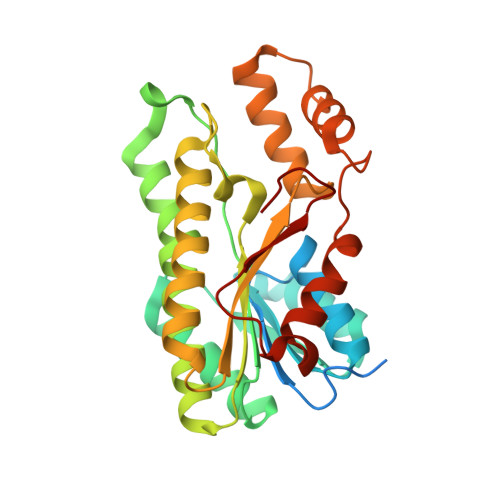Characterization of the sorbitol dehydrogenase SmoS from Sinorhizobium meliloti 1021.
Kohlmeier, M.G., Bailey-Elkin, B.A., Mark, B.L., Oresnik, I.J.(2021) Acta Crystallogr D Struct Biol 77: 380-390
- PubMed: 33645541
- DOI: https://doi.org/10.1107/S2059798321001017
- Primary Citation of Related Structures:
6PEI, 6PEJ - PubMed Abstract:
Sinorhizobium meliloti 1021 is a Gram-negative alphaproteobacterium with a robust capacity for carbohydrate metabolism. The enzymes that facilitate these reactions assist in the survival of the bacterium across a range of environmental niches, and they may also be suitable for use in industrial processes. SmoS is a dehydrogenase that catalyzes the oxidation of the commonly occurring sugar alcohols sorbitol and galactitol to fructose and tagatose, respectively, using NAD + as a cofactor. The main objective of this study was to evaluate SmoS using biochemical techniques. The nucleotide sequence was codon-optimized for heterologous expression in Escherichia coli BL21 (DE3) Gold cells and the protein was subsequently overexpressed and purified. Size-exclusion chromatography and X-ray diffraction experiments suggest that SmoS is a tetramer. SmoS was crystallized, and crystals obtained in the absence of substrate diffracted to 2.1 Å resolution and those of a complex with sorbitol diffracted to 2.0 Å resolution. SmoS was characterized kinetically and shown to have a preference for sorbitol despite having a higher affinity for galactitol. Computational ligand-docking experiments suggest that tagatose binds the protein in a more energetically favourable complex than fructose, which is retained in the active site over a longer time frame following oxidation and reduces the rate of the reaction. These results supplement the inventory of biomolecules with potential for industrial applications and enhance the understanding of metabolism in the model organism S. meliloti.
- Department of Microbiology, University of Manitoba, Winnipeg, Manitoba, Canada.
Organizational Affiliation:

















